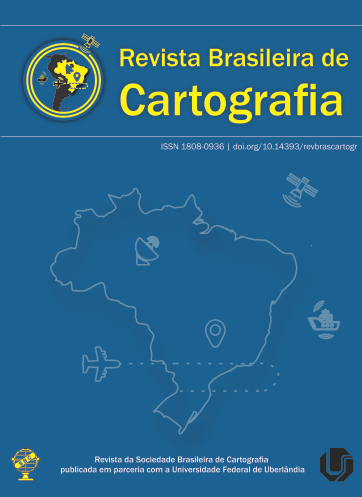Speckle noise reduction in the mapping of submarine linear structures in synthetic aperture sonar images
Main Article Content
Abstract
The use of the Synthetic Aperture Sonar (SAS) in the hydrographic survey with autonomous underwater vehicle (AUV) has enabled the mapping of small objects at great depths. The SAS images from these surveys are of high resolution due to synthetic aperture technology and the AUV approach to the target of interest. Despite these advantages SAS image are highly corrupted by a granular multiplicative noise, called speckle noise, which hamper automated object identification methods. The objective of this paper was to evaluate quantitatively and qualitatively the reduction of speckle noise, as well as the increase in the contrast of features of underwater linear structures, pipelines and cables, associated to oil and gas transport in synthetic aperture sonar images using techniques image enhancement. Two images acquired by High Resolution Interferometric Synthetic Aperture Sonar (HISAS) 1030 were used, with spatial resolution of 4x4 cm and radiometric resolution of 8 bits. From the results, it was verified that the speckle noise had a significant reduction of 14.4% and 6.9%, and a discrete gain of 0.2% and 1.2% for each image, respectively, in the enhancement of features the study areas. The results showed that the use of image enhancement functions is a powerful tool in reducing speckle noise and improving the definition of objects of interest in SAS images, thus allowing faster and more efficient semiautomatic processing of feature extraction.
Downloads
Metrics
Article Details
Authors who publish in this journal agree to the following terms:
- Authors retain copyright and grant the journal right of first publication with the work simultaneously licensed under a Creative Commons Attribution License that allows others to share the work with an acknowledgment of the work's authorship and initial publication in this journal.
- Authors can enter into separate, additional contractual arrangements for the non-exclusive distribution of the journal's published version of the work (e.g., post it to an institutional repository or publish it in a book), with an acknowledgment of its initial publication in this journal.
- Authors are permitted and encouraged to post their work online (e.g., in institutional repositories or on their website) before and during the submission process, as it can lead to productive exchanges, as well as earlier and greater citation of published work (see "The Effect of Open Access").





